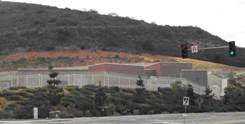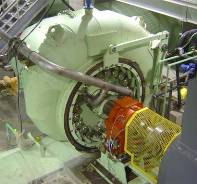In conduit hydropower, existing tunnels, canals, pipelines, aqueducts and other manmade structures that carry water are fitted with electric generating equipment. Conduit projects often qualify as small hydro, and are able to extract power from water without the need for a large dam or reservoir.
Conduit projects are efficient, cost-effective and environmentally friendly, as they are able to generate electricity from existing water flows, exploit synergies with infrastructure already in place and often requiring less of a capital investment.
Recognizing the benefits of conduit projects, the Federal Energy Regulatory Commission provides a permitting exemption to certain qualifying facilities, but there is work that could be done to further support this technology. In a July 2010 report, the National Hydropower Association’s Small Hydro Council issued a set of preliminary recommendations on FERC’s conduit and small hydro permitting process.
In 2013, NHA secured enactment of legislation that removes certain conduit projects from FERC jurisdiction, thus expediting the process. Learn more about the Hydropower Regulatory Efficiency Act of 2013.
Project highlight: San Diego County Water Authority

The Rancho Penasquitos Pressure Control/Hydroelectric Facility (RP PCHF) is located in a neighborhood near Mira Mesa, California.
The San Diego Water County Authority is one water infrastructure operator to take advantage of the synergies offered by conduit hydro, installing a 4.5MW generator at its Ranchos Penasquitos Pressure Control Hydroelectric Facility (RP PCHF). An important addition to the Water Authority’s extensive water delivery system, the project can provide enough power for approximately 5,000 households in the area. The project, completed in 2007, was undertaken in tandem with needed water system upgrades. The San Diego County Water Authority signed a long-term agreement to sell the facility’s power to utility SDG&E; it expects to be able to pay back the cost of installing the hydroelectric project in just seven years.

The Horizontal Francis Turbine Generator allows the RP PCHF to generate 4.5 megawatts of clean, reliable power.
Among the project’s key benefits are:
- The improved pipeline operations provide more flexibility for moving power throughout the region by creating a pressurized, bi-directional system that keeps water flowing to member agencies.
- High-pressure flows in the pipelines allow the Water Authority to generate electricity through a 4.5-megawatt turbine generator. This year-round operation provides a clean energy resource to the area and avoids the emissions associated with generating electricity through fossil-fuel plants.
- Through a 10-year contract with the San Diego Gas and Electric Company, the Water Authority will be able to sell electricity to the utility, which reduces the need to import power from other regions and resources. Generating this electricity reduces the Water Authority’s costs and makes surplus power from the project available to the region.
This project garnered San Diego Water Authority an Outstanding Stewards of America’s Waters award in 2008.


